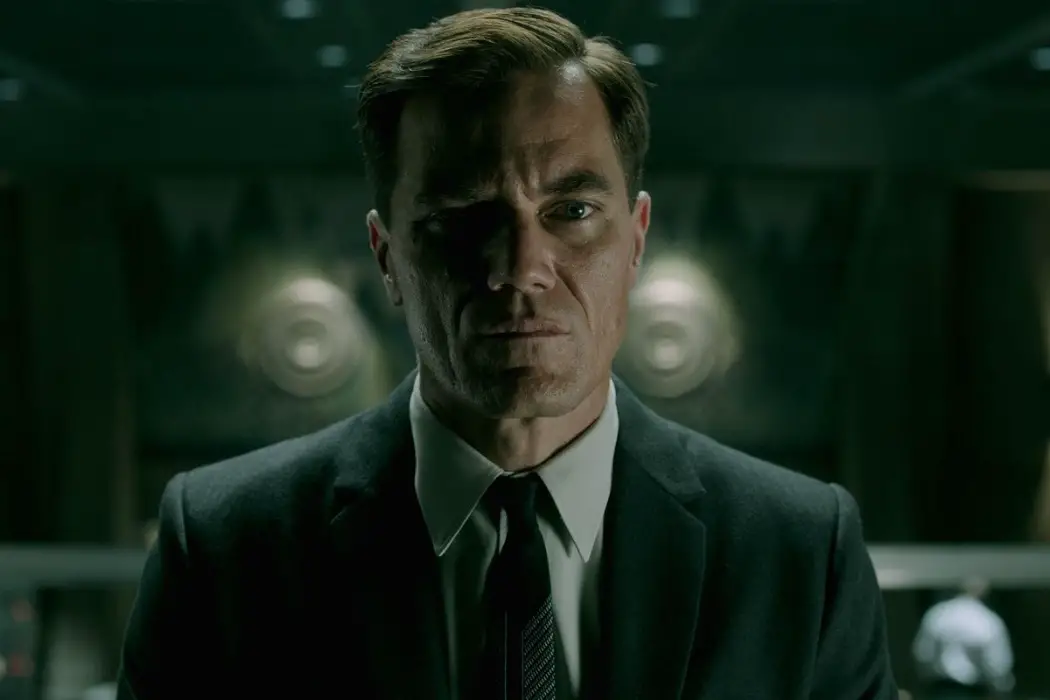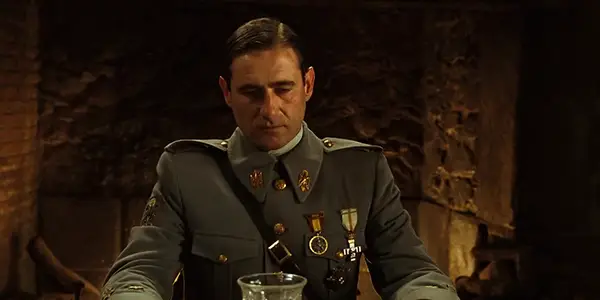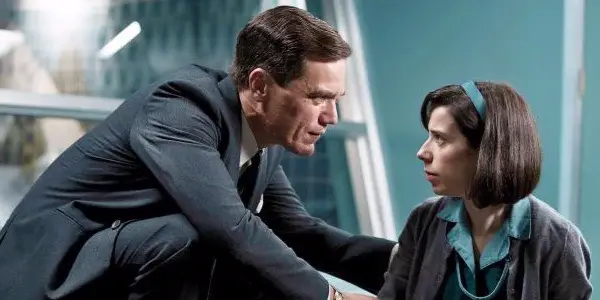The Human Villains Of Guillermo Del Toro

Patrick Crossen is a writer currently living in Pittsburgh, PA…
With an Academy Award for Best Director under his belt, Guillermo del Toro has vanquished any remaining doubt that he can hold his own amongst the best working directors in cinema. Del Toro has taken hold of film by following the age-old advice “Write what you know”; and Del Toro knows monsters.
He has become the world’s leading monsterologist, using creatures in his films to mirror the emotions and situations that humans have tried to sweep under the rug; anger, fear, anxiety, Del Toro uses his monsters to represent these things. He works as a modern-day fairytale spinner, utilizing monsters in his stories to say something greater than we first realize. The very mention of his name might conjure up images of the faun from Pan’s Labyrinth, or the creature from The Shape of Water.
But while the world revels in Del Toro’s monsters, I don’t think his affinity for the fantastic alone is what helped him climb to his Best Director’s chair. Del Toro has pieces that need to all work to create one cohesive piece of art. And while I love the monsters (as I type this at my desk, figurines of a phoenix and a dragon stare back at me) I spend equal time fawning over the antagonists in Del Toro’s films as I do the creatures.
The Shape of Water and Pan’s Labyrinth highlight Del Toro’s villains in their element. Between Michael Shannon’s portrayal of the Strickland in the former and Sergi Lopez’s unforgettable performance as Captain Vidal in the latter, Del Toro presented the world with two of the finest villains of the 21stcentury.
Positions of Power
What should obviously stand out about Strickland and Vidal is that they are men in positions of power. Strickland, a veteran who has been tasked by another general to capture and vivisect the creature, flaunts his power to any and all under his command.
While having sex, Strickland covers the mouth of his wife when she speaks, silencing her while he lies on top of her. The scene is a prototypical example of Strickland’s lust for power, and I use that word literally. Del Toro displays in Strickland a literal lust for power by showing us Strickland’s need to silence his wife. Even Strickland’s sexual desires are rooted in having power. Power is a thing to be lusted after, according to Del Toro. It’s something that can overcome men so fully that it can work its way into their libido if they allow it.
Captain Vidal, by the very utterance of his name, also exudes a man with military history and power. He leads the Spanish oppression against the resistance, who live in the woods, desperately seeking refuge while they fight back as best they can against his forces. Del Toro gives us a far less intimate look at Vidal than Strickland. There is no reveal of his power being tied to his sexual desires.
However, Vidal is rarely seen without his uniform on. His character has submerged himself in his power in this way. He exercises his power for the sake of exercising power. When two men are caught and thought to be part of the resistance, the captured men plead with Vidal, telling him they’re simple hunters. After Vidal has beaten one to death and shot the other, we learn that they were in fact hunters. Vidal doesn’t mind though. It was a chance for him to show who he was. To flex the power that has overtaken him.

Power, to Del Toro, blinds the users to the people beneath them. It creates a rift, a wall so that they can no longer empathize or connect with the people that serve them. He portrays this subtly through his characters, ingraining it into their actions and dialogue so that they become the full embodiment of this prospect. In the aforementioned scene with Vidal in Pan’s Labyrinth, the villainous captain shoots the second hunter.
This scene would be powerful enough, but an extra movement allows Del Toro to fully reveal what kind of man Vidal is. A soldier holds the hunter Vidal is interrogating. The motions are swift. Vidal points the gun, giving his own soldier a split second to move out of the way, and the captain fires, killing the hunter. The determination with which Vidal moves tells us that he is going to fire the gun weather the soldier moves or not. The soldier ranks beneath him, his life means nothing to the captain.
Bound By Gender
Besides their positions of power, it’s worth noting that Captain Vidal and Strickland are both men. It’s worth nothing this because, in truth, both of them would want history to note it. Vidal and Strickland share an obsession with their gender that heightens their repulsive and cruel nature.
In The Shape of Water, Strickland enters the bathroom that Sally Hawkins’ Eliza is cleaning. He washes his hands first. After using the urinal, he tells her, “A man washes his hands before or after tending to his needs. If he does it both times it points to a weakness of character.” It’s a line that borders on the absurd and doesn’t shy away from gross.

Strickland, down to the way he cleans himself, uses his gender to guide how he carries himself. He is trapped in this way, bound by societal laws. He represents an opposite of Eliza, while he conforms to the world around him, she lives in the fantastic world of the creature that she becomes so taken with.
Vidal’s obsession with his masculinity is conveyed through his only other concern than the growing threat of the resistance. The birth of his son. His treatment of his wife; belittling her in conversation, showing her little affection, and controlling how she transports herself (he requests upon their first meeting that she sits in a wheel chair) are all important in reckoning with his masculinity.
His view of his wife is that of an object. She is not a person, so much as a vessel through which his son will be born. In an exchange that nearly holds as much absurdity as Strickland’s hand-washing rules, a doctor asks Vidal how he is so sure that the child will be a boy. Vidal simply grins and says, “Don’t f*ck with me.”
Vidal and Strickland are bound by their masculinity. Del Toro uses this, not as an excuse, but as a cause for their actions. Through these characters, Del Toro warns us of the dangers of power and the obsession of self. But rather than simply warn us by having the villains meet their terrible end, he makes the warning, the villain, that much more effective by having them succeed in their devious tasks.
A Successful Demise
Tragically, both Strickland and Vidal end up killing the protagonists of their respective films. Ofelia, the young girl, lies dead after being shot by Vidal. Eliza is carried into the river by the Creature at the end of The Shape of Water after having met the same fate by Strickland’s hand.
And this is what makes Del Toro’s villains so effective. While these two films end with a bit of comforting magical realism, Eliza being able to breathe underwater, and Ofelia entering the magical kingdom that she always dreamt of, they come about after a character has been fatally wounded. Are they dead? Maybe. Is the fantasy true? Maybe.
The uncertainty puts the magic in Magical Realism. But by using this kind of ambiguous and fantastical ending, Del Toro is able to let his villains succeed in defeating our heroes in such a way that we don’t feel cheated, just a poignant sort of triumph. There are no easy wins, or happy endings. There are simply endings, which are neither happy nor sad. Del Toro wants the endings to have power.
Del Toro’s villains and the evil they cause should be brought up as often as his monsters. While only I only referenced The Shape of Water and Pan’s Labyrinth, you’d find similar villains in Cronos or Devil’s Backbone. Del Toro’s villains don’t come with horns or scales. They come with flesh and neatly combed hair. His villains are violent, and often kill the things most dear to us; our heroes. Del Toro masters his villains because, very simply, he allows them to be villainous. He allows them to sink their teeth so far into the goodness of the world that we feel we can’t bare it any longer, until he finally forces them to release by having them meet their doom.
Do you have a favorite Guillermo del Toro villain? What else makes them so villainous? Let me know in the comments below!
Does content like this matter to you?
Become a Member and support film journalism. Unlock access to all of Film Inquiry`s great articles. Join a community of like-minded readers who are passionate about cinema - get access to our private members Network, give back to independent filmmakers, and more.
Patrick Crossen is a writer currently living in Pittsburgh, PA with a B.A. in creative writing. When he's not frantically checking his mailbox for his Hogwarts letter, he's probably at the movies. Patrick is currently working on his first fantasy novel. If his eyes are glazed over, it's because you haven't mentioned enough Guillermo Del Toro movies while talking to him.













